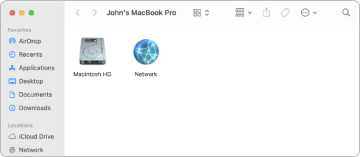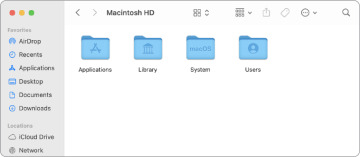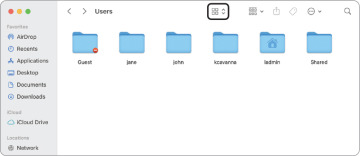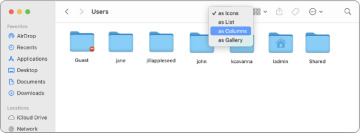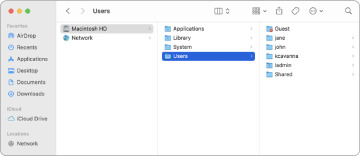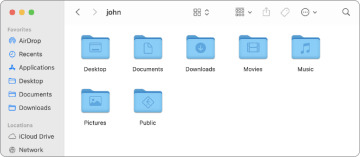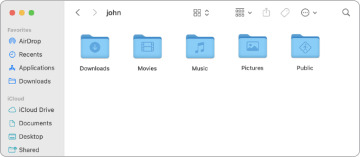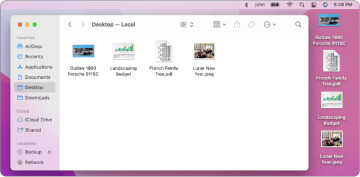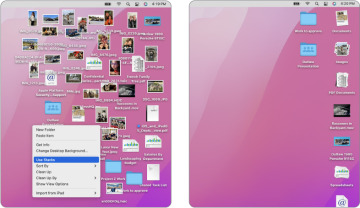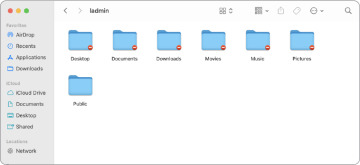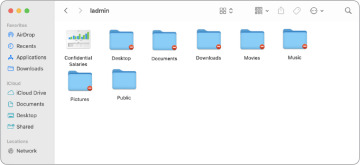Manage User Home Folders in macOS Monterey
Step-by-step tutorials on managing user home folders on Mac. From deleting users' accounts while preserving home folder contents, to migrating and restoring home folders, learn troubleshooting tips to support your Mac user in this sample chapter from macOS Support Essentials 12 - Apple Pro Training Series.
When you log in to your Mac, you can securely store documents in your home folder. You can also store and access documents in other locations, but this lesson focuses on your home folder. In macOS Catalina or later, your home folder is stored on the read-write APFS Data volume, technically separate from your read-only APFS System volume, but this separation doesn’t make a difference in troubleshooting.
Reference 8.1 User Home Folders
The default location for a locally stored home folder is /Users/name, where name is the user account name.
Many Mac users don’t have much reason to think about files and folders outside of their home folder. But if you’re going to share files with other users on your Mac, share files to other devices on your network, or help someone else troubleshoot their Mac, it helps to understand how the Users folder fits into the file system in general.
One way to start is with the Finder. Choose Go > Computer (or press Shift-Command-C). The Finder displays your startup disk, which is named Macintosh HD by default.
After you open your startup disk, the Finder displays folders, including the Users folder.
The Users folder contains home folders and the Shared folder. Additionally, if the Guest user was ever turned on, you’ll also see the Guest folder. The Finder displays your home folder with an icon of a house. In the following example, jane, john, kcavanna, and ladmin are user account names.
In the Finder window toolbar, click the View As menu (it’s circled in the previous figure), then choose “as Columns” (or choose View > As Columns) to change how the Users folder is presented.
As the following figure illustrates, the Users folder appears to be contained inside your startup disk and the Users folder contains home folders.
When you create a new user account, macOS generates a home folder for that account. The home folder contains these default visible home folders: Desktop, Documents, Downloads, Movies, Music, Pictures, and Public. In the Finder, you can open your home folder by choosing Go > Home or by pressing Shift-Command-H.
Files you save to your desktop appear on your desktop and in the Desktop folder.
You can use stacks on the desktop to keep files neatly organized in groups. When you save a file to the desktop, it’s automatically added to the appropriate stack. This helps you keep your desktop tidy. To turn on the Stacks feature, click the desktop to make the Finder the active app; then from the View menu, choose Use Stacks. Or at any point you can Control-click the desktop and choose Use Stacks.
When you download content from the internet, it goes into the Downloads folder by default.
Your home folder also contains a folder called Library that includes user-specific preference files, fonts, contacts, keychains, mailboxes, favorites, screen savers, and other app resources. The Library folder is hidden in the default Finder view.
The Documents, Movies, Music, and Pictures folders are the default locations for document, movie, music, and picture files, respectively.
If you open other users’ home folders, you can’t see inside their default folders, except for their Public folders.
But if someone stores a file at the top level of their home folder—not inside a folder in their home folder—other users can see that file. You’ll find more information about changing the permissions for a file in Lesson 13, “Manage Permissions and Sharing.” The following figure illustrates that if John stores a file called Confidential Salaries in his home folder, another user on that Mac will be able to see and open that file (but not make any changes to it).
If you want to share items with other users on your Mac, put these items in your Public folder. If you turn on the File Sharing service, users who connect to your Mac can see files here, too. Lesson 25, “Manage Host Sharing and Personal Firewall,” has more information about sharing files over the network. The following figure is from the perspective of John Appleseed, for a file named Shared Task List in John Appleseed’s Public folder.
Other users can view the contents of your Public folder, and you can view the contents of any other user’s Public folder. Continuing the example from the previous figure, the following figure illustrates how the Finder displays the contents of John Appleseed’s home folder, including his Public folder, to other local users.
If you want to give a copy of a file to another user, you can use the other user’s Drop Box folder. The Drop Box folder (not to be confused with a third-party service with a similar name) is a special folder. Every user has a folder named Drop Box that’s inside that user’s Public folder. You can put files into another user’s Drop Box folder, but you can’t remove the files once you put them there. And you can’t see what’s inside another user’s Drop Box folder.
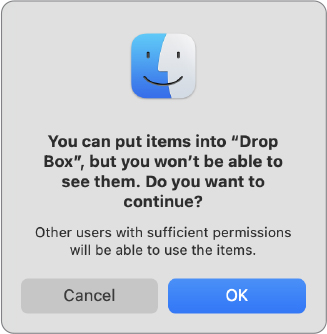
Except for putting items in Drop Box, other users can’t add items or make changes to files in your Public folder.
You can change folder permissions as described in Lesson 13.
You might see an Applications folder in your home folder. When you are logged in as a standard user and install some apps, they automatically create an Applications folder in your home folder. For other apps, you can choose to place them there. Only you have access to the contents of your personal Applications folder (though someone with access to an administrator user account can take steps to access your personal Applications folder). See Reference 18.3, “Install Apps Using Drag-and-Drop and Software Packages,” for more information.
